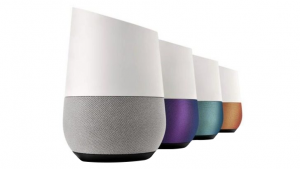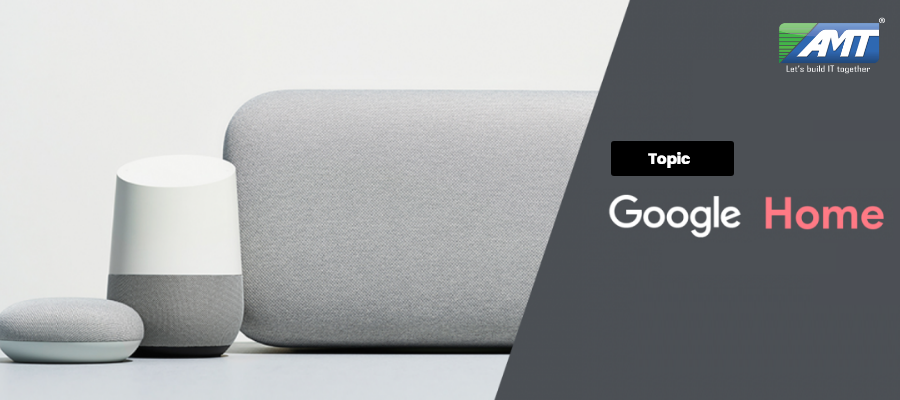Google Home is a brand of smart speakers developed by Google. The first device was announced in May 2016 and released in the United States in November 2016, with subsequent releases globally throughout 2017.
Google Home speakers enable users to speak voice commands to interact with services through Google’s intelligent personal assistant called Google Assistant. A large number of services, both in-house and third-party, are integrated, allowing users to listen to music, control playback of videos or photos, or receive news updates entirely by voice. Google Home devices also have integrated support for home automation, letting users control smart home appliances with their voice. Multiple Google Home devices can be placed in different rooms in a home for synchronized playback of music. An update in April 2017 brought multi-user support, allowing the device to distinguish between up to six people by voice. In May 2017, Google announced multiple updates to Google Home’s functionality, including: free hands-free phone calling in the United States and Canada; proactive updates ahead of scheduled events; visual responses on mobile devices or Chrome-cast-enabled televisions; Bluetooth audio streaming; and the ability to add reminders and calendar appointments.

The original product has a cylindrical shape with colored status LED’s on the top for visual representation of its status, and the cover over the base is modular, with different color options offered through Google Store intended for the device to blend into the environment. In October 2017, Google announced two additions to the product lineup, the Google Home Mini and the Google Home Max.
Various forms of both in-house and third-party services are integrated into Google Home, allowing users to speak voice commands to control interaction with them. Examples of supported services include Google Play Music, Spotify and iHeartRadio for audio, Netflix, YouTube and Google Photos for videos and photos, Google Calendar and Google Keep for tasks, and CNN, CNBC and The Wall Street Journal for news updates. New services are integrated on an ongoing basis.
Google Assistant, an intelligent personal assistant, is included as the main and only assistant in Google Home. Unlike its cousin, Google Now, Assistant is able to engage in two-way conversations with users. The Wall Street Journal reported in October 2016 that Google hired writers from Pixar movies and The Onion satirical newspaper to develop a personality for the Assistant, with a long-term goal being to invoke a sense of emotional rapport in users.
Users can connect and group together multiple Home speakers for synchronized playback of music in every room. A notable feature omission, multiple accounts, was criticized by JR Raphael of Computerworld in November 2016, but an update for users in the United States in April 2017 enabled the feature. Google Home can now recognize up to six different voices, pulling information from their different accounts depending on who’s talking. However, Ryan Whitwam of Android Police criticized the inability to create reminders or appointments in users’ calendars, writing that “adding something to your calendar has to be one of the most common tasks for a human assistant. It’s certainly not impossible to do this stuff, either”
Google Home includes home automation features, enabling owners to use it as a central hub to control smart devices. Examples of supported devices include the Chrome-cast digital media player, and products from Nest, Smart-things, Philips Hue, LIFX, LightwaveRF, and Logitech Harmony.
In May 2017, Google announced multiple updates to Google Home’s functionality. It now supports hands-free calling, letting users make calls to any landline or mobile phone in the United States and Canada for free. There is no 9-1-1 emergency services support, however. “Proactive Assistance” enables the device to dictate updates to users without being asked, including updates on traffic before a scheduled event. “Visual Responses” let users send answers from Google Home onto their mobile device or Chrome-cast-enabled television.The device now also supports Bluetooth audio streaming through compatible devices (including phones, tablets and computers), and the ability to schedule calendar appointments, with upcoming support for reminders.
On March 28, 2018, Google made the announcement via their blog that users would be able to pair any of their Google Home devices to their own Bluetooth speakers without requiring the use of a Chrome-cast streamer.
The above is a brief about Google Home compiled from the official site of Google. Watch this space for more information on the latest trends in Technology.
